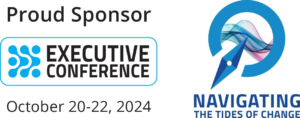
ELECTRIFICATION: A SOURCE GUIDE TO THE RENEWABLE POWER TRANSITION
What is Electrification?
Electrification is the broad name given to the modern industrial trend of replacing traditional energy sources with electric power. This switch generally leads to increased efficiency, reduced emissions, and enhanced performance, due to the low cost and consistent availability of electric power compared to fossil fuels. Manufacturers, retailers, shipping and logistics companies, governments, universities, military forces, and other organizations are rapidly transitioning their equipment and facilities to electric sources.
Yet electrification requires a wide range of systems, parts, and components tailored to different industries and individual manufacturers and their specific applications.
How to Use This Article
What follows here is an analysis of current trends in electrification affecting the upper Midwest (Minnesota, Iowa, North Dakota, South Dakota, Nebraska, and Wisconsin), and the implications for businesses in those states.
Below that, we provide a breakdown of the various systems, parts, and components essential to electrification in different industries. At the end of this article, you will also find an alphabetical listing of available electrification products by category. You know—just to make life easier.
Contents
Electrification in the Upper Midwest
Electrification and Electric Vehicles
Industrial and Commercial Building Electrification
Battery Energy Storage Systems (BESS)
Solar Energy Systems: Electrification and Power Generation
Commercial & Industrial Solar Buying Guide
Electrification Sourcing Guide by Industry
Sourcing Considerations for Electrification and Engineering
Where to Go Next...
---
Electrification in the Upper Midwest
The upper Midwest (including Minnesota, Iowa, North Dakota, South Dakota, Nebraska, and Wisconsin) is rapidly emerging as a leader in electrification, driven by data center expansion, renewable energy growth, and infrastructure modernization.
Key Trends in Electrification in the Upper Midwest
- Rapid Growth of Electric Vehicles: The region witnessed a significant surge in electric vehicle (EV) adoption across various segments, including passenger vehicles, commercial trucks, and public transportation. This was driven by factors such as expanding model availability, advancements in battery technology, and a growing network of charging infrastructure.
- Accelerated Deployment of Renewable Energy: Wind and solar power generation continued to expand rapidly, driven by declining costs and supportive government policies. These renewable sources are increasingly becoming the dominant sources of electricity generation in the region.
- Grid Modernization Initiatives: Utilities are actively investing in grid upgrades to accommodate the increasing demand for electricity, integrate the growing influx of renewable energy, and enhance grid resilience. This includes investments in smart grid technologies, energy storage solutions, and grid automation.
- Advancements in Energy Storage Technologies: Battery storage technologies are rapidly evolving, offering greater grid flexibility, enabling the integration of more intermittent renewable energy sources, and enhancing grid reliability during peak demand periods.
In addition to these, we see corporate partnerships, such as those between tech companies and utilities, accelerating the deployment of renewable energy infrastructure. Utilities like Xcel Energy are investing heavily in grid upgrades and additional renewable capacity, offering opportunities for collaboration and innovation.
Furthermore, data center growth in southeastern Wisconsin and western Minnesota highlights the need for scalable energy solutions, with ripple effects across the logistics and IT supply chains. These advancements not only enhance operational efficiency but also position the upper Midwest as a key player in the global transition to a sustainable and electrified future.
Strategic Implications for Businesses, 2025-2027
The Upper Midwest is undergoing a dynamic shift toward a more electrified future, presenting both challenges and opportunities for businesses in the region.
Competitive Advantage
Companies investing in renewable energy and electrified systems will position themselves as leaders in sustainability, appealing to environmentally conscious customers and partners. This may involve:
- Offering EV charging infrastructure for customers and employees.
- Integrating renewable energy sources into their operations.
- Electrifying their fleets (e.g., delivery trucks, service vehicles).
- Developing and offering innovative electric products and services.
Cost Savings
Incorporating battery storage systems and energy-efficient technologies can help businesses reduce operational costs, particularly during peak demand periods.
Regulatory Alignment
Aligning operations with state and federal clean energy mandates can streamline compliance, secure incentives, and bolster brand claims.
Supply Chain Opportunities
The demand for electrification components and systems creates opportunities for regional suppliers to innovate and grow, especially in manufacturing and agricultural technology sectors.
Resilience and Reliability
Investments in microgrids and renewable energy integration enhance operational continuity, safeguarding against grid outages and energy price volatility.
Investing in Workforce Development
The transition to a more electrified future will require a skilled workforce. Businesses should invest in training and upskilling their employees in areas such as renewable energy technologies, grid modernization, and electric vehicle maintenance.
Building Strategic Partnerships
Collaboration among businesses, government agencies, utilities, and other stakeholders is crucial for navigating the complexities of electrification, ensuring a smooth and equitable transition, and maximizing the economic benefits of this shift.
Leveraging Innovation and Technology
Businesses should actively seek and leverage innovative technologies that can accelerate the adoption of electrification, improve energy efficiency, and enhance grid resilience. This could include exploring new energy storage technologies, developing innovative grid management solutions, and participating in demand-side management programs.
Equity and Environmental Justice
While electrical power in itself is not without environmental, social, or governance concerns, it is generally considered to be less geopolitically fraught than fossil fuels. Yet simply implementing electrification measures does not ensure ethical conduct. It is critical that the transition to a clean energy future does not exacerbate existing environmental and social inequities here or elsewhere. Work only with suppliers and manufacturer partners who are well respected and vetted in this regard.
To navigate these changes effectively, partnering with a knowledgeable and well-connected sales representative is essential. These are your ideal “electrification consultants.”
Such expertise ensures access to the right products, industry insights, and key partnerships needed to adapt and thrive. By leveraging this guidance, businesses can position themselves for success, contribute to a more sustainable future, and seize the economic opportunities brought by the electrification revolution.
---
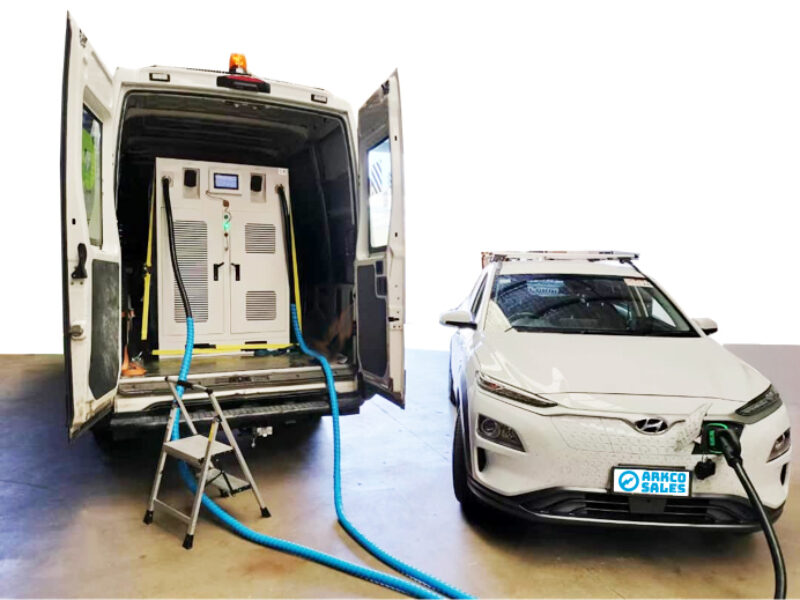
Electrification and Electric Vehicles
EV Charging Explained
The rise of electric vehicles (EVs) necessitates robust charging infrastructure. Many companies are developing advanced charging systems to meet this demand, and it can be difficult to know how to choose one.
Businesses in the Upper Midwest, such as retail stores, hotels, office complexes, healthcare facilities, educational institutions, and government buildings, can greatly benefit from investing in EV chargers.
As electric vehicle adoption rises, especially in environmentally conscious states like Minnesota and Wisconsin, providing EV charging stations enhances a business's appeal to eco-conscious customers and employees while showcasing a commitment to sustainability. Industries like logistics and transportation can also benefit by integrating EV chargers for fleet vehicles to reduce long-term fuel costs and emissions.
The type of EV charger a business should install depends on its use case. Level 2 Chargers are ideal for most businesses, including retail, offices, and hospitality, as they can charge vehicles during the duration of a typical visit or workday.
DC Fast Chargers are better suited for highway-adjacent locations, logistics hubs, or businesses aiming to attract travelers or fleet vehicles requiring quick turnaround times.
The process of buying and installing EV chargers begins with assessing the site’s electrical capacity and parking layout to determine the number and type of chargers needed. Businesses should consult with qualified EV charger vendors and electricians to design a solution tailored to their needs.
Once a plan is in place, the next steps include applying for any necessary permits, installing the equipment, and integrating it into the grid. Businesses in the Upper Midwest may also be eligible for state-specific incentives or federal tax credits to offset costs. Finally, implementing software for monitoring and managing the chargers ensures efficient operation and provides data on usage.
Charging Stations
Some manufacturers offer built-to-order EV chargers, while some offer DC power modules and other internal components for those designing their own chargers.
Whare the Benefits of Investing in EV Chargers?
- Attracting Customers and Tenants: Installing EV chargers creates a competitive edge for businesses by attracting eco-conscious customers, tenants, and employees who prioritize sustainable practices
- Future-Proofing Properties: As EV adoption grows, charging stations will become a standard expectation for retail centers, workplaces, and hospitality venues. Early adoption positions businesses as forward-thinking and adaptable
- Revenue Opportunities: Businesses can monetize EV chargers through usage fees, advertising opportunities on charging units, and participation in demand-response programs offered by utilities
- Enhanced Brand Image: Providing EV charging services signals a commitment to sustainability, boosting brand reputation and aligning with ESG goals
- Increased Property Value: Properties equipped with EV infrastructure are likely to see higher valuations as demand for such amenities grows
- Employee Retention and Satisfaction: Offering workplace charging can improve employee satisfaction and retention by providing a valuable perk for EV-owning staff
- Tax Incentives and Rebates: Business owners in the Upper Midwest can take advantage of state and federal tax incentives to reduce the cost of purchasing and installing chargers, making the investment more affordable
- Alignment with Utility Programs: Utilities in the region often provide support for EV infrastructure, including reduced rates for off-peak charging, grants, and load management programs to mitigate operational costs
- Fleet Electrification Support: For facilities managing vehicle fleets, EV chargers can reduce long-term operational costs, streamline fleet management, and align with emissions reduction goals
- Environmental Impact: Investing in EV chargers contributes meaningfully to regional and national goals of reducing greenhouse gas emissions, creating cleaner communities and healthier living environments
What Are the Different Kinds of EV Chargers? Who Are They For?
Here is a brief summary of the two kinds of EV chargers, and their respective markets and demographics:
Level II AC chargers provide charging speeds typically between 3.3 kW and 19.2 kW, translating to about 10 to 60 miles of range per hour, depending on the vehicle and power source.
These chargers use alternating current (AC) and are commonly installed at residential homes, workplaces, and destinations like shopping malls or hotels.
They are ideal for locations where vehicles remain parked for extended periods, such as overnight at home or during a full workday. Their lower cost and simpler installation compared to DC fast chargers make them accessible to a wide range of businesses and homeowners.
Demographically, they appeal to residential EV owners, workplace facilities supporting employee EV adoption, and businesses seeking to attract EV-driving customers with convenient, slow-charging options.
DC fast chargers, on the other hand, deliver power directly to the vehicle's battery using direct current (DC) at much higher rates, typically between 50 kW and 350 kW. This allows them to charge a vehicle from 20% to 80% in 20–40 minutes, depending on the vehicle's battery size and the charger’s output.
These chargers are strategically placed along highways, at rest stops, or in urban fast-charging hubs to support long-distance travelers and fleet operators requiring quick turnarounds.
They cater to demographics prioritizing speed and convenience, such as frequent travelers, ride-share drivers, and logistics fleets. However, DC fast chargers require higher upfront costs, significant electrical infrastructure, and ongoing maintenance, making them a more suitable investment for high-traffic areas or businesses with heavy EV user throughput.
In a nutshell, Level II chargers address long-term, cost-effective charging needs for daily users, while DC fast chargers focus on rapid charging for on-the-go users in high-demand scenarios.
Both are crucial to building a comprehensive EV charging ecosystem. However the demand curve is rising in 2024-2025 for the fast chargers, due to the increased battery capacity and range of available vehicles.
Recommended Manufacturers
EVESCO
The Electric Vehicle Energy Storage Company, or EVESCO, provides energy storage systems designed to work with any EV charging hardware (not just their own) or power generation source. Their all-in-one energy storage solutions manage energy costs and electrical loads, helping to future-proof locations against costly grid upgrades.
---
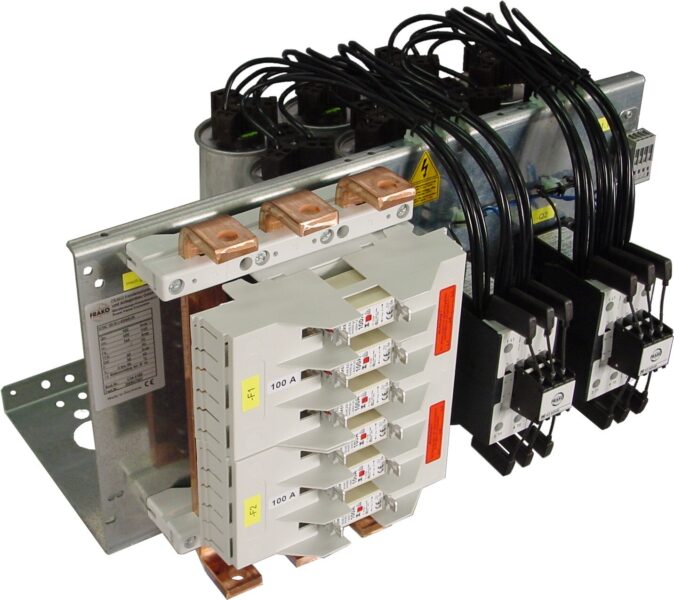
Electrification of Industrial and Commercial Buildings
The Business of Electrification: Key Trends
Industrial power solutions prioritize energy efficiency to minimize waste and reduce environmental impact. Technologies such as advanced power management systems, energy-efficient motors, and automated control systems contribute to optimizing energy usage.
Companies are increasingly adopting smart technologies that allow for real-time monitoring and adjustment of power consumption to align with production demands—a wise investment in 2025, as opposed to 2030, when it may be too late to keep up with an already-electrified competition.
The reliability and longevity of electrical systems depends on maintaining power quality and efficient energy management. These factors in turn depend on high-quality components and protective systems.
Industrial and Commercial Buildings: Common Equipment and Components
Motors and Drives
Electric motors and variable frequency drives (VFDs) are foundational to modern building electrification. Motors power systems from HVAC to industrial machinery with efficiency and reliability, while VFDs adjust motor speed and torque to reduce energy waste and costs. Electrified solutions replacing fossil fuel systems achieve lower emissions and greater flexibility.
Control Panels and Switchgear
Control panels and switchgear ensure the safe, efficient management of electrical systems. Panels house relays, circuit breakers, and programmable logic controllers (PLCs) to coordinate operations. Advanced “smart” panels monitor energy use in real-time, optimizing cost and environmental impact. Switchgear protects systems by managing circuits and preventing overloads, ensuring reliable electrification.
Power Factor Correction Systems
Power factor correction (PFC) systems improve energy efficiency by reducing reactive power. These systems use capacitors and controllers to minimize energy loss and enhance performance, cutting utility costs and extending infrastructure lifespan.
Lighting Systems
Energy-efficient lighting, especially LEDs, is central to electrification. LEDs consume less energy, last longer, and offer superior light quality, benefiting factories, warehouses, and offices. While LED lighting can cause harmonics, appropriate power quality components (e.g., Frako) address these issues.
HVACR Systems
Electrified HVACR systems, such as heat pumps, provide efficient heating and cooling while reducing carbon footprints. EC fans and HVLS fans further enhance efficiency by cutting energy consumption, improving air circulation, and lowering utility costs in large spaces.
EV Chargers
With rising EV adoption, commercial chargers are vital for electrification. These systems integrate with power systems, offering smart charging, load balancing, and renewable energy compatibility to support future-ready buildings.
Backup Power Systems
Battery storage and generators ensure uninterrupted operations in electrified buildings. Batteries offer clean, efficient emergency power, while electrified generators support sustainability efforts. These systems are crucial for mission-critical facilities like hospitals and data centers.
Recommended Manufacturers
Frako
Specializes in power quality solutions, offering products that monitor and improve the efficiency of electrical systems. Their solutions help in reducing energy losses and enhancing system reliability.
Ecojiva
Provides energy management systems that optimize solar power usage through demand management technology, ensuring efficient energy consumption and cost savings. EcoJiva also offers uninterruptible power supplies (UPS) to protect against utility power outages, ensuring continuous operation of critical systems and preventing loss of business and revenue.
Fantastic
Fantastic designs and produces high-volume low-speed (HVLS) fans, solving air stratification problems in large environments through an efficient mixing of temperatures year-round.
---
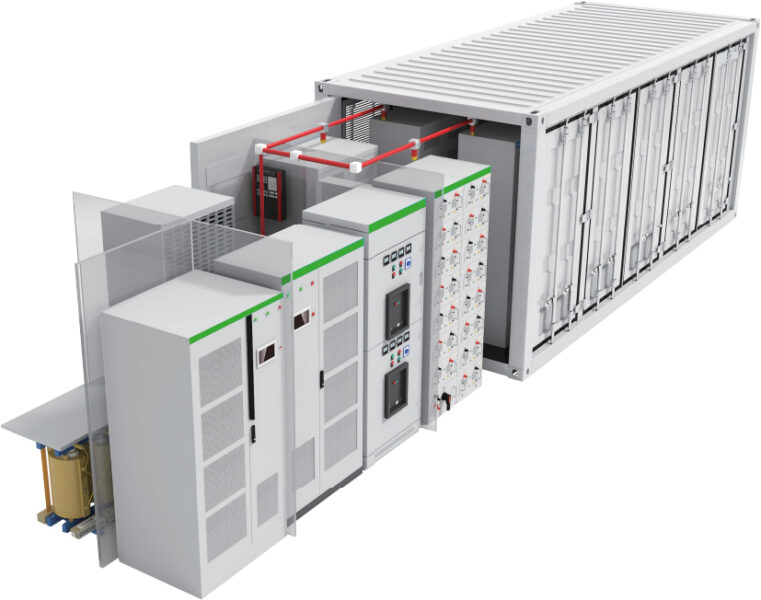
A Guide to Battery Energy Storage Systems (BESS)
Everything Businesses Need to Know About Energy Storage
Energy storage is crucial for managing the intermittent nature of renewable energy sources and ensuring a stable power supply. Battery systems (often integrated with EV chargers) store energy and provide power during peak demand or grid outages. Companies are developing various storage solutions to address these challenges.
Investing in battery energy storage makes sense for businesses in several scenarios where energy efficiency, cost management, or operational continuity are key considerations. Here are the primary contexts where battery energy storage proves valuable:
Managing Energy Costs
Battery storage systems enable businesses to save on energy costs by leveraging peak shaving and load shifting strategies. During periods of high demand, when utility rates are at their peak, stored energy can be discharged to reduce reliance on grid power, significantly lowering electricity bills. For businesses in industries like manufacturing, retail, or data centers that experience substantial energy use during peak hours, this approach can yield substantial cost savings. Additionally, some regions offer incentives or demand-response programs that pay businesses for reducing grid load during high-demand periods, further enhancing the financial appeal of storage solutions.
Integrating Renewable Energy
For businesses adopting renewable energy systems like solar or wind, battery storage ensures that excess energy generated during off-peak hours is not wasted. This stored energy can then be used when generation drops, such as at night or during low wind conditions, improving energy independence and maximizing the return on investment in renewables. Industries with large rooftop or ground-mounted solar installations, such as agriculture, commercial real estate, and logistics, often find storage an effective way to achieve sustainability goals while improving energy reliability.
Ensuring Energy Resilience and Backup Power
In sectors where continuity is critical, such as healthcare, data centers, or retail, battery energy storage systems provide a reliable backup power source during grid outages. Unlike traditional generators, batteries offer instantaneous power delivery, preventing downtime and potential revenue loss. Additionally, they operate quietly and without emissions, making them suitable for urban or environmentally sensitive areas.
Enabling EV Charging Infrastructure
Businesses investing in electric vehicle (EV) charging infrastructure may use battery storage to enhance charging capabilities. In areas with limited grid capacity, battery systems can store energy during low-demand periods and discharge it during peak charging times, avoiding expensive grid upgrades. Fast food chains, shopping malls, and roadside service areas with high EV traffic often benefit from integrating storage with chargers to meet customer demand without straining the local power grid.
Participating in Energy Markets
Battery storage allows businesses to participate in energy trading markets by buying electricity when prices are low and selling stored energy back to the grid when prices are high. This strategy is particularly viable for large-scale facilities or industrial users in deregulated energy markets where time-of-use pricing or real-time energy trading is available.
Key Considerations for Investment
When deciding whether to invest in battery storage, businesses should evaluate:
- Energy usage patterns: Peak demand periods and reliance on renewable energy sources.
- Grid limitations: Availability of grid capacity and potential upgrade costs.
- Regulatory incentives: Local incentives for battery storage or renewable energy integration.
- ROI: Expected savings, revenue opportunities, and payback period for the investment.
- Operational priorities: Need for energy resilience, sustainability goals, or EV support.
Battery energy storage systems can be a strategic investment for businesses looking to reduce energy costs, enhance sustainability, and improve operational resilience. By aligning the technology with their specific energy needs, businesses can unlock significant value and future-proof their operations against evolving energy challenges.
First Step When Considering Battery Energy Storage: Compare Energy Bills to Potential Savings
For businesses investigating cutting energy costs—or looking to fulfill a green energy mandate—the first step is to share recent utility bills with a vendor you are considering. They will calculate your potential savings, and will tell you up front how long the pay-back period is expected to be.
Reputable, honest BESS companies will not present to you a false, misleading, or overly optimistic pay-back period. They want your business, but they also depend on your legitimate success and word-of-mouth testimonials to grow their own business. Moreover, they understand that the energy market can fluctuate season to season and year after year, and an ethical BESS company will give you a conservative estimate.
Recommended Manufacturers
EVESCO
Offers energy storage systems that integrate with EV charging infrastructure, utilizing proven battery and power conversion technology to manage energy costs and electrical loads. These systems help future-proof locations against costly grid upgrades.
Ecojiva
Provides third party battery energy storage solutions that complement their solar power systems, transforming excess generation into usable power and enhancing the efficiency of renewable energy installations.
Solar Energy Systems: Electrification and Power Generation
As the United States moves towards sustainable practices, industries are embracing renewable energy sources. Solar panels, wind turbines, and biomass facilities are being integrated into industrial complexes to harness clean energy.
This not only reduces the carbon footprint but also enhances the resilience of industrial operations by diversifying the energy mix. Solar energy offers engineers an opportunity to design products that align with modern sustainability goals while enhancing operational efficiency.
How Businesses Are Taking Advantage of Solar Energy
Some businesses and commercial or industrial property owners invest in solar simply to offset their primary energy costs. Others use it for secondary costs, storing energy (see Battery Energy Storage above) and tapping into it during peak hours to save on their utility bill, and/or selling excess energy back to the utility. Still others have a mandate from their community, values, or charter, to enact measures for ecological sustainability.
Once initial "armchair" research is out of the way, typically there are two ways to go about the process of investigating and initiating a solar installation project.
The first is to hire an engineer to determine feasibility and design, then figure out financing, grant, and rebate options on your own, and then hand off to a commercial/industrial installer.
The other option is to find an all-in-one solution: a dedicated commercial/industrial installer that offers in-house engineering, grant writing and financial consulting, and handles the installation process.
While one might argue that there is expertise to be gained from seeking out and hiring specialists, the reality is that this introduces incongruities, costs, and delays that a for-profit business usually seeks to avoid.
Companies like Ecojiva and EVESCO are setting benchmarks in solar integration by providing pre-engineered solutions for commercial and industrial applications. Ecojiva offers turnkey solar systems tailored for large manufacturing plants, office buildings, farms, universities, hotels, and entertainment complexes. EVESCO builds plug-and-play commercial and industrial battery energy storage.
Instead of spending profits on costly marketing campaigns to win customers in the highly competitive residential solar market, companies that focus just on commercial and industrial solar tend to operate by reputation, and by their highly visible portfolio.
Turnkey solutions make a lot of sense, particularly of several criteria can be met: a provider should be amply staffed with highly skilled and specialized engineers; their engineers should have considerable depth of experience working with and for utilities; the provider should carry substantial inventory on-hand in the continental U.S.; their focus should be mostly if not exclusively on the commercial and industrial market, as opposed to residential or utility-scale; and the provider should offer some form of in-house grant writing or financial consulting.
These are some of the reasons that ArKco Sales has selected Ecojiva as its preferred solar installer partner. We are confident that Ecojiva (pronounced "eco-JEE-va") has the expertise, specialized skill, flexibility, and friendly, no-nonsense professional experience to meet your needs.
Just Starting to Think About Solar for Your Business? Download our FREE Commercial & Industrial Solar Buying Guide -- COMING JANUARY 2025
Key Parts or Components to Consider
- Solar Panels: The primary component for converting sunlight into electricity. Choose between monocrystalline, polycrystalline, or thin-film panels.
- Inverter: Converts DC electricity from panels into usable AC electricity. Options include string inverters, microinverters, or hybrid inverters.
- Mounting System: Secures panels to roofs, the ground, or canopy structures. Types vary based on installation location.
- Battery Energy Storage System: Stores excess energy for use during low-sunlight periods or power outages.
- Monitoring System: Tracks energy production and consumption in real time.
- Electrical Components: Wires, connectors, junction boxes, and disconnect switches for a complete system.
- Charge Controller (for off-grid systems): Regulates energy flow to batteries, preventing overcharging or discharging.
Recommended Manufacturers
Ecojiva
Provides third party battery energy storage solutions that complement their solar power systems, transforming excess generation into usable power and enhancing the efficiency of renewable energy installations.
EVESCO
Offers energy storage systems that integrate with solar energy systems, utilizing proven battery and power conversion technology to manage energy costs and electrical loads. These systems help future-proof locations against costly grid upgrades.
---

Electrification Sourcing Guide by Industry
What follows below is a concise overview of systems and components necessary for the process of electrification in certain key industries in the upper Midwest (Minnesota, Iowa, North Dakota, South Dakota, Nebraska, and Wisconsin).
The purpose of this overview is to provide procurement managers, project managers, and executives with a broad understanding of the systems and budgetary line items involved in transitioning from traditional to electric power.
This is only a general overview and every business will of course differ by need. For specific systems and parts, pricing, and availability, please email your friendly ArKco Sales rep at arkco@arkco-sales.com or call (651) 777-7454.
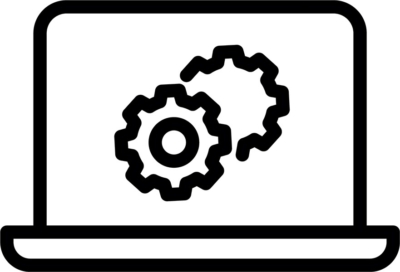
IT, Telecom, and Datacenter: Common Equipment and Components
Uninterruptible Power Supplies (UPS)
Ensures continuity during power outages by providing a stable and temporary power source to prevent system failures or data loss. Advanced models include features like remote monitoring and energy-efficient designs to support modern datacenter demands.
Cooling Systems
Liquid cooling units, heat exchangers, and fan trays manage the heat generated by servers, ensuring optimal performance and preventing thermal shutdowns. Innovations in cooling technology, such as immersion cooling and energy recovery systems, are becoming increasingly important to reduce operational costs and environmental impact.
Power Distribution Units (PDU)
PDUs, especially when integrated with emergency shutoff, ensure efficient and reliable power management within racks and enclosures, distributing electricity to individual devices while monitoring consumption.
EMI Shielding
Materials and enclosures protect against electromagnetic interference, which can disrupt sensitive equipment and compromise data integrity. Advanced EMI shielding solutions also enhance compliance with stringent regulatory standards in IT and telecom environments.
Advanced Connectors and Backplanes
High-speed data connectors and modular backplane systems enable seamless communication and data transfer within IT applications. These components are designed to support evolving technologies like 5G and high-performance computing, ensuring scalability and reliability in demanding environments.
Microgrids
Microgrids are gaining popularity as a decentralized approach to power distribution within industrial settings, particularly in cloud storage facilities and universities. By creating smaller, independent power grids, industries can enhance resilience against grid failures and disruptions. Microgrids also facilitate better control over energy distribution, enabling optimized usage and reducing dependency on external power sources.
Put simply, to create a microgrid, an organization needs the following systems:
- A power generation source, such as a solar power system
- A battery energy storage system
- A power electronics system, including inverters and capacitors
- A control system for monitoring, tracking, and adjusting performance
- A distribution infrastructure, including transformers, cables, and points-of-common-coupling (PCCs) where the microgrid connects to the main grid
Recommended Manufacturers
EVESCO
Offers commercial and industrial scale battery energy storage systems that form the backbone of microgrids or backup power systems, utilizing proven battery and power conversion technology to manage energy costs and electrical loads.
nVent Schroff
Protection and thermal management for in-building networks, campus and industrial sites, as well as small to hyperscale data centers. Schroff is part of the global nVent family of brands, recognized for its best-in-class engineering, customer service, customization and configurability.
Laird Thermal Systems
Laird Thermal Systems designs and manufactures the most comprehensive family of thermal management products and custom solutions. Products range from thermoelectric coolers and cooler assemblies to liquid cooling assemblies and custom assemblies.
---

Agriculture and Livestock: Common Equipment and Components
Electrical Equipment
The power density of batteries continues to improve, and major OEMs of heavy machinery (such as John Deere) are hard at work on electrifying their fleets.
Batteries aren’t the only component that goes into these electrified tractors and other farm vehicles, though: space-saving smart busbars, like Mersen’s Infini-Cell for example, can provide a platform for batteries while also delivering real-time monitoring.
Electrified machinery is already commercially available on a smaller scale for sustainable farming practices. Power your equipment with state-of-the-art LiFePO4 batteries that feature Bluetooth connectivity, such as those manufactured by Power Sonic.
IoT Sensors
Sensors for soil health, moisture, and environmental monitoring are becoming a necessary part of the modern electrified farm. Sensors might be custom engineered and manufactured for your application.
Solar Irrigation Systems
Solar-powered pumps and controllers for water management. It sounds impressive, and it is, but one needn’t have specially designed pumps and pipes. An existing irrigation system can be connected to a solar power source (and a battery energy storage system for backup) once one is installed. A ground-mounted solar system can do double duty, shading a large area and reducing the volume of water needed.
Energy Management Systems (EMS)
Optimizes energy use for greenhouses, barns, and other facilities. An energy management system (EMS) is typically installed by a building automation contractor or a specialized energy management company who will design, install, and configure the system based on the needs of a building or facility, often in collaboration with the building owner or facility manager. This could involve electrical contractors for hardware installation and IT professionals for network integration.
Electric Motors
Necessary, when switching from fossil fuels, to power equipment like grain dryers, conveyors, and ventilation systems.
EC and HVLS Fans
EC fans, with their electronically controlled motors, optimize airflow and minimize energy consumption, while HVLS fans move large volumes of air with minimal energy input due to their unique design. Applications include cooling livestock, improving greenhouse ventilation, accelerating crop drying, controlling dust in grain handling, and enabling integration with renewable energy sources like solar power.
By incorporating these innovative technologies, farmers can reduce operating costs, enhance productivity, improve animal welfare, and minimize their environmental impact, aligning with the broader goals of sustainable and efficient agricultural practices.
Recommended Manufacturers
ebm-papst
EC axial fans from ebm-papst enhance ventilation efficiency in agriculture and livestock industries by providing precise air circulation while consuming less energy. Their reliability in harsh environments, such as barns and greenhouses, ensures optimal climate control for healthier livestock and improved crop growth.
Fantastic Fans
Fantastic designs and produces high-volume low-speed (HVLS) fans, solving air stratification problems in large environments, such as barns and greenhouses, through an efficient mixing of temperatures year-round.
Ecojiva
Ecojiva provides solar energy solutions for agriculture and livestock businesses, specializing in systems that reduce energy costs and environmental impact. Their turnkey solutions include design, grant writing, installation, and maintenance of solar panels tailored to power critical operations like irrigation, ventilation, and refrigeration. By integrating renewable energy, Ecojiva helps farms and livestock facilities enhance efficiency, improve resilience, and achieve long-term sustainability.
EVESCO
Offers innovative energy storage solutions, enabling more efficient use of renewable energy like solar and wind. Their systems store excess energy for use during peak demand, ensuring reliable power for critical operations such as irrigation, heating, and cooling. By reducing energy costs and improving power resilience, EVESCO helps farms and livestock facilities operate more sustainably and economically.
Power Sonic
Power Sonic manufactures a wide range of batteries, including sealed lead acid (SLA), lithium iron phosphate (LiFePO4), and other advanced chemistries designed for reliability and performance. These batteries are ideal for livestock and agriculture applications, powering equipment like solar pumps, electric fencing, and remote monitoring systems with long-lasting, low-maintenance energy solutions that improve efficiency and reduce downtime.
---

Medical Devices: Common Equipment and Components
Power Supplies
Power supplies are an integral part of the design and functionality of modern medical devices. They influence everything from safety and reliability to innovation and compliance.
High-quality power supplies ensure consistent operation and can handle power fluctuations, safeguarding both equipment and patient outcomes. Any advancement in medical technology will, almost by definition, require equivalent or superior advancements in power supply technology.
Portable Power Systems
Integral to mobile medical units like ambulances, field clinics, and portable diagnostic devices. These systems require high-capacity lithium-ion or solid-state batteries that can deliver reliable performance under varying conditions.
Battery management systems (BMSs) ensure safe and efficient energy delivery, while durable, lightweight enclosures with effective thermal management protect the components and extend their operational lifespan.
Sensitive Instrumentation
Sensitive instrumentation, such as MRI and CT scanners, demands precision-engineered components to function effectively in environments with potential electromagnetic interference.
This equipment relies on EMI-shielded enclosures to maintain signal integrity, high-performance connectors for secure data and power transfer, and ultra-sensitive sensors capable of detecting minute signals without degradation.
Backup Power
Essential for healthcare facilities to guarantee continuous operation of critical equipment, such as ventilators and surgical systems, during power outages. Uninterruptible power supplies (UPS) with redundant, fault-tolerant designs and rapid switching capabilities, ensure seamless power transitions.
These systems depend on high-capacity energy storage solutions, such as advanced lithium-ion or lead-acid batteries, and monitoring systems that provide real-time diagnostics and predictive maintenance capabilities.
Electric Sterilizers
Electric sterilizers, including UV-C LED units, are vital for maintaining hygiene in healthcare environments. These devices rely on high-efficiency UV-C light to achieve the conditions required for effective sterilization.
Though choice of UV versus autoclave depends on the material or items to be sterilized, autoclaves generally require more energy and must be made of corrosion-resistant materials, such as stainless steel, to ensure durability and ease of cleaning. UV-C units generally use less energy and may be made of a range of materials.
LED Surgical Lights
LED surgical lights are indispensable in operating rooms, providing high-efficiency, shadow-free illumination with excellent color rendering. These systems depend on high-intensity LEDs designed for medical use, with advanced thermal management solutions that ensure consistent performance and extend LED longevity.
Energy-Efficient Displays
Displays are critical for patient monitoring, diagnostic imaging, and surgical visualization. They require high resolution and accurate color rendering to ensure clear, precise imaging, particularly for tasks like reading scans or guiding minimally invasive procedures.
Touchscreen functionality is often integrated for enhanced usability in sterile environments, requiring robust materials that are resistant to repeated cleaning with harsh disinfectants.
Additionally, these displays must feature durable enclosures, efficient thermal management, and compliance with medical standards for safety and electromagnetic compatibility.
Recommended Manufacturers
Display Visions
High-resolution, medical-grade displays with precise color rendering, robust touchscreens, and durable enclosures tailored for use in diagnostic imaging, patient monitoring, and surgical visualization.
Frako
High-capacity energy storage solutions, such as capacitors, that support battery management systems in portable power applications. Capacitors for energy storage and power conditioning in backup systems.
nVent Schroff
EMI-shielded enclosures and chassis for sensitive diagnostic equipment like MRI and CT scanners, UPS components, and critical test and measurement equipment. Precision enclosures and thermal management systems to maintain LED performance and longevity.
Quell
Highly effective filter seal connector inserts for EMI protection and signal integrity in sensitive devices.
Power Sonic
Supplies high-performance batteries and power solutions, including lithium-ion and sealed lead-acid batteries, designed for reliability and safety in medical devices like portable diagnostic equipment, backup power systems, and patient monitoring tools. Their products meet stringent medical standards and provide long-lasting, efficient energy storage for critical healthcare applications.
SETi
Patented UV LED chip packages and modules for medical-grade disinfection and sterilization.
Switchcraft-ConXall
High-performance, shielded connectors for data and power in diagnostic systems, or interfacing displays in harsh environments.
Vox Power
High-efficiency, modular power supplies tailored for medical devices, ensuring reliable, low-noise energy delivery that meets stringent safety and regulatory standards.
---

Electrification Across Industries: Key Components and Systems
Battery Energy Storage Systems (BESS): ensure reliable power supply and grid stability, as well as potential energy cost savings
Busbars: for efficient power distribution in high-current applications.
Capacitors (AC): manage consistent energy flow, cost, and reduce harmonics in electrical systems.
Connectors: circular, board-level, and coaxial, for robust and reliable connections.
Cable Sleeving: protective coverings for insulation, abrasion resistance, and organization to ensure safety and reliability.
Enclosures: weatherproof, modular, and EMI-shielded enclosures for housing electronics and electrical systems.
Sensors, Monitoring and Control Systems: real-time systems for tracking energy usage and performance.
Power Conversion Equipment: inverters, transformers, and power supplies for efficient energy transformation.
---

Sourcing Considerations for Electrification and Engineering
As industrial electrification accelerates, sourcing considerations have become central to achieving operational efficiency and sustainability. Engineers face complex technical and regulatory requirements while navigating supply chain dynamics and technological advancements.
Compatibility
Sourcing components for electrification requires compatibility with existing systems, ensuring alignment with technical specifications like voltage and communication protocols. This reduces failures, downtime, and retrofitting needs.
Modular design and Industry 4.0 standards such as Modbus and Ethernet/IP support seamless integration. Components should also align with digital twins, simulation tools, and lifecycle management systems for better maintenance and upgrades.
Regulatory Compliance
Components must meet international safety and performance standards like IEC, UL, and ISO, ensuring electromagnetic compatibility and safety. Engineers must consider regional regulations, renewable energy directives, and cybersecurity protocols such as IEC 62443.
Pre-certified components streamline compliance and reduce risks. Engaging certification bodies early can prevent costly revisions.
Durability and Environment
Industrial components must withstand stressors like extreme temperatures, moisture, and vibration. Materials such as stainless steel and thermally conductive plastics ensure durability, while advanced coatings enhance resistance.
Engineers should prioritize ingress protection (IP) ratings and test performance under real-world conditions. Using sustainable materials can align durability with environmental goals.
Scalability
Scalability ensures systems can expand without redesigns. Modular power supplies and busbars allow for incremental growth, while scalable warranties and supplier flexibility support long-term strategies.
Distributed energy systems and microgrid expansions require adaptable solutions. Firmware updates can also enhance functionality, reducing upfront costs while maintaining flexibility.
Integration with Renewables
The integration of renewable energy sources like solar and wind drives electrification. Components must support bi-directional power flows, energy storage, and grid synchronization. High-efficiency ratings minimize energy loss, while smart grids necessitate dynamic load balancing and monitoring.
Battery energy storage systems (BESS) stabilize energy delivery during peak usage and grid disruptions. Compliance with standards like IEEE 1547 ensures seamless renewable integration.
Cost vs. Longevity
Balancing costs with reliability is critical. Low-cost components may save initially but lead to higher maintenance costs. Assessing total cost of ownership (TCO) ensures durability and efficiency. Predictive maintenance and extended warranties optimize this trade-off.
Sustainable designs and as-a-service models reduce costs while ensuring maintenance and upgrades. Collaboration with suppliers can achieve cost efficiency and long-term performance.
---

Where to Go Next… (Hint: Contact Us)
Just Looking Around?
If you’re looking for a system or component that wasn’t mentioned on this page, and you prefer to look on your own, you might find it in one of the following places:
Of course, to discuss specific products or applications, please contact us and a friendly, knowledgeable ArKco rep will be happy to speak with you!
Integration and Customization
Electrification — and its cousin, renewable energy — often requires integration of multiple components and systems, each tailored to your specific application needs. Whether you need customized enclosures, solar energy systems with battery energy storage, systems with thermal integration, smart monitoring systems, or custom busbars with smart monitoring, these components can be seamlessly integrated into your design.
Just email arkco@arkco-sales.com or call (651) 777-7454, and let us know what you have in mind. These conversations are hassle-free, and usually enjoyable!
Support and Consultation
As a manufacturer's sales representative, we are your personal guide and advisor throughout the design process. We’re not only dedicated to helping you choose the right solutions for your electrification projects, but we want to make sure your designs work and that your job is made easier and more enjoyable.
We offer comprehensive support and consultation to ensure that your systems are optimized for performance, reliability, and user satisfaction. Again, the best way to reach us is via email at arkco@arkco-sales.com or call (651) 777-7454.
News and Articles
ArKco publishes free and exclusive content for subscribers, from topical news on power, thermal management, and electrification, to a number of manufacturer-specific news briefs.
Unlike most newsletters that clog your inbox and are driven by a sales-first focus, these are written for engineers by real humans. Your information is always safe with us, and you can unsubscribe (easily!) at any time.
Sign up for exclusive content by visiting our newsletter signup page.
Beyond Electrification
ArKco Sales is your guide and source for electromechanical systems and components across a broad range of industries and applications. In addition to Electrification, we provide expertise and connect you with manufacturers in the following categories:

